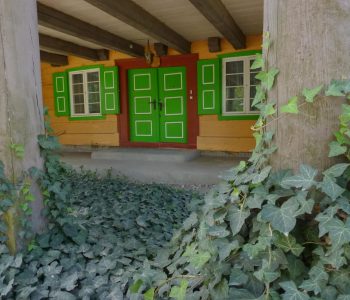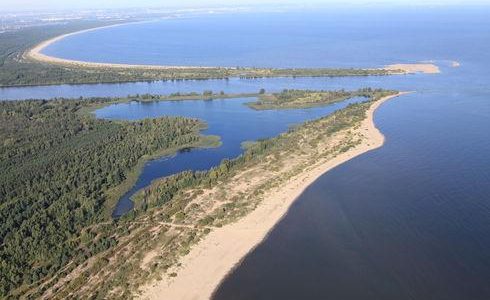
Kaszubski Park Krajobrazowy [Kashubian Landscape Park]
Kashubia is an area loved by tourists from all over Poland, and there are a few of reasons for this. Next to the interesting history and culture of this region, guests are attracted here by ‘kaszëbsczé jezora and kaszëbsczi las’, which broadly means nature that combines forest and water in a special way. With an area of more than 32 thousand hectares, the Kaszubski Park Krajobrazowy [Kashubian Landscape Park] covers the highest and the most diverse part of the Pojezierze Kaszubskie [Kashubian Lake District], which is not coincidentally often called “Szwajcaria Kaszubska” [Kashubian Switzerland]. Within the area of the park there are the Jeziora Raduńskie [Raduńskie Lakes], the Wzgórza Szymbarskie [Szymbarskie Hills] and the Lasy Mirachowskie [Mirachowskie Forests]. For nature enthusiasts, there are an abundance of marhed educational trails of varying character and length. While paying a visit to Kashubia, it is surely worth getting to know all of them.
A mandatory challenge for nature treasure seekers is the 20-kilometre long trail “Szlakiem rezerwatów przyrody” [“Following the trail of nature reserves”]. This has its start in the village Mojusz, which is located 269 metres above sea-level and whose rich history goes back further than one may expect. After getting familiar with the interesting story of the village, you will embark on a trip of local nature reserves, each of which has a different profile. First, after a short time, you will reach the water-floral reserve “Żurawie Chrusty,” which is located near the village Mojuszewska Huta and constitutes a feeding ground for cranes nesting nearby. You will find here a midforest lake with plant species like the lesser pond-sedge, common cottongrass, small cranberry and round-leaved sundew. The reserve is surrounded by peat bogs and forests. The next stop is Jezioro Bukowskie [Bukowskie Lake], in the area of which we will find a monument of nature – a 31-metre high white pine. Then, in the Kurze Grzędy reserve you will have an opportunity to see a haven for predatory birds, including the buzzard, hawk, sparrowhawk and osprey.
If visiting Mojusz and not feeling like going on a longer trip, you could decide on the nearly 2-kilometre long ecological trail “Poznać i zrozumieć las” [“To get to know and understand the forest”]. The name says almost everything about the educational character of this trail – you will start to understand the role and the importance of forest for much life on Earth. You will learn, among other things, about the biological phenomenon of ecological succession, the character of midforest swamps, the forest activity of ants and bees, as well as about the forester’s work. All this is supported by the experience of communing with a living ecosystem.
Similar subjects are raised by the short (1.3 kilometres) forest trail in Leśnictwo Dąbrowa [Dąbrowa Forestry] in the neighbourhood of the road between Kartuzy and Somonino. This route starts in the headquarters of the forestry, and the goal of the forest hike is reaching the peat bog “Dębowe Błota.” On educational boards you will find information about forest protection and helping forests to develop, as well as about mushrooms present there.
Not far from Kartuzy is the nature reserve Zamkowa Góra [Castle Mountain], with its central point in the form of a moraine hill with remains of a medieval hill fort. At the foot of the hill, which is 225 metres above sea-level at the top, there is the nature trail “Przyroda okolic Zamkowej Góry” [“The nature of the area of Castle Mountain”]. This trail is marked out on the shore of Jezioro Ciche [Ciche Lake] and take into account the reserve’s special natural treasures. The hill itself is overgrown with a forest of beeches which are around 250-years-old and which often constitute a home for birds like buzzards or black woodpeckers. In the groundcover layer there are rare or endangered plants like the wood melick, forest fescue, European bittercress or long beechfern.
The highest point in the whole of Kashubia is Wieżyca – 329 metres above sea-level. An educational nature trail called “Pod Wieżycą” [“Under Wieżyca”] was created in this area in 2006. This 3.2-kilometre trail starts in the village of Szymbark and aims to attractively portray the role of nature and ecology in human life. While hiking this trail, you will find “Las Erasmusa”, a forest plantation created by students in which tree planting has been carried out every year since 2008. The trail ends near the Centrum Edukacji i Promocji Regionu w Szymbarku [Regional Centre of Education and Promotion of the Region in Szymbark], a popular complex of tourist attractions, of which the best known one is an upside-down wooden house.














